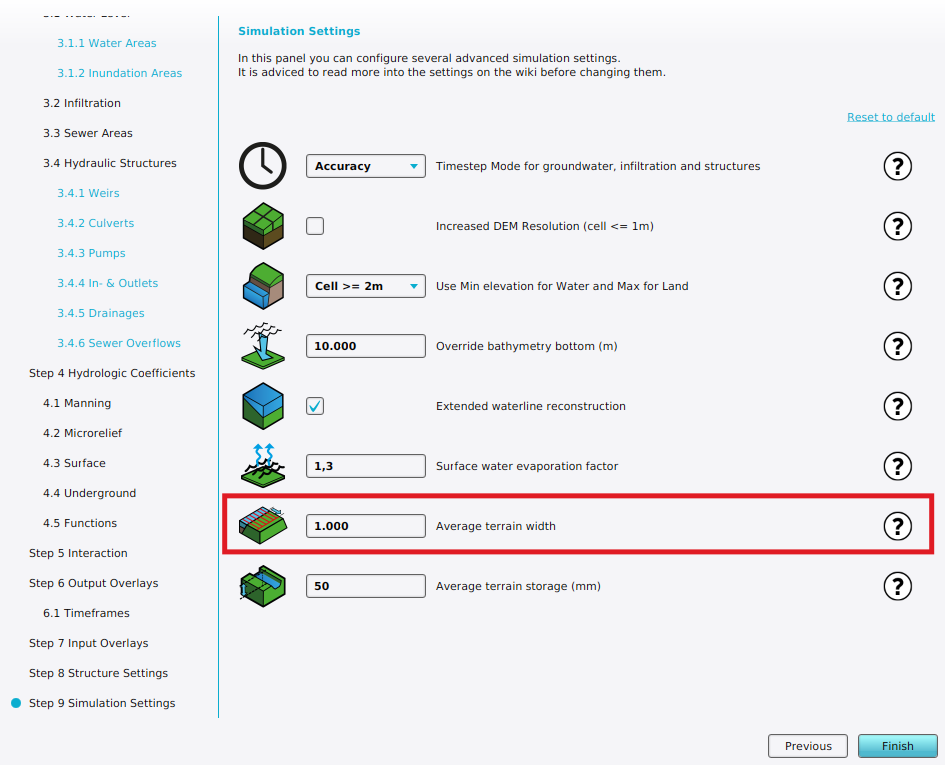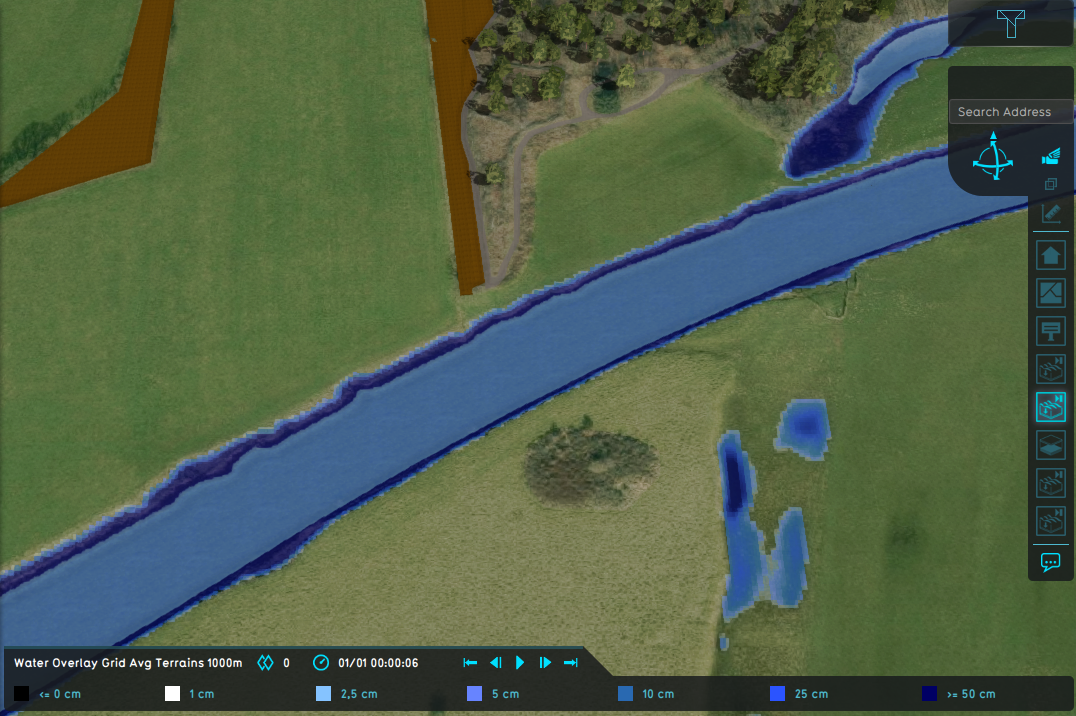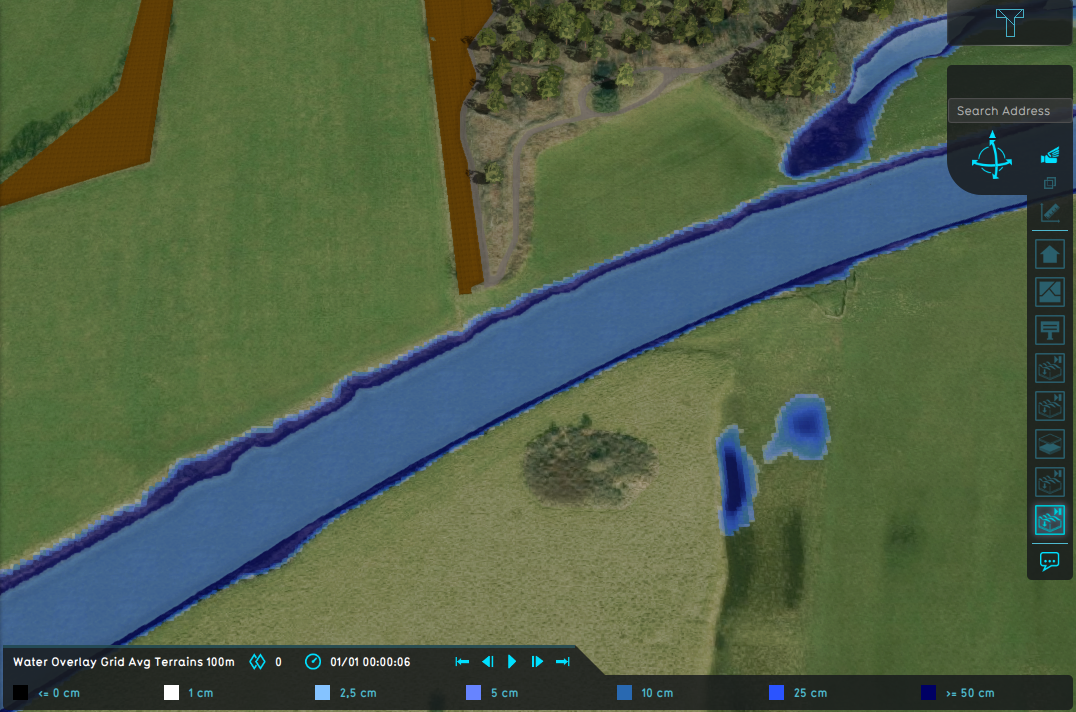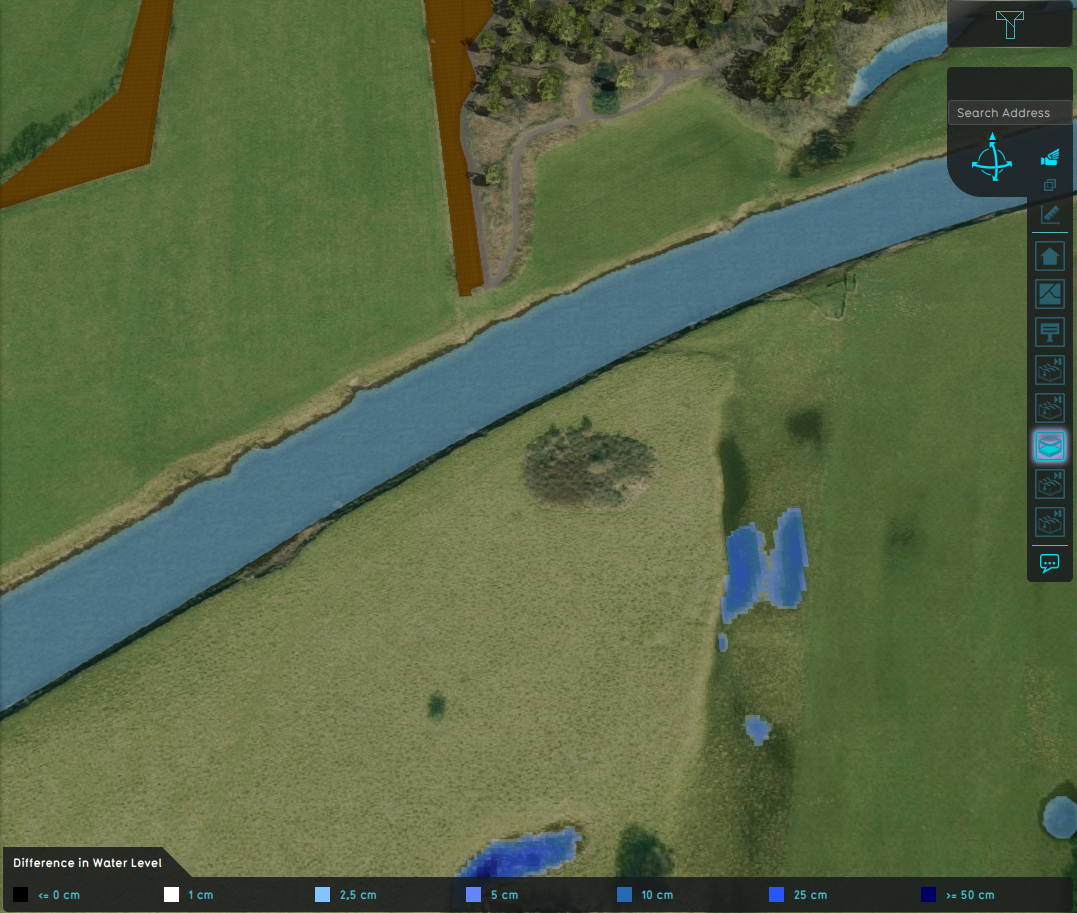Avg terrain width m (Water Overlay): Difference between revisions
Jump to navigation
Jump to search
No edit summary |
No edit summary |
||
| Line 4: | Line 4: | ||
|attribute=AVG_TERRAIN_WIDTH_M | |attribute=AVG_TERRAIN_WIDTH_M | ||
|unit=m | |unit=m | ||
|range=0 to 10000 [[grid cell]]s | |||
|description=With the surface water mode set to '''Avg Terrain''', identified water average areas can be extended to include surrounding terrain within the configured distance. | |description=With the surface water mode set to '''Avg Terrain''', identified water average areas can be extended to include surrounding terrain within the configured distance. | ||
|defaultvalue=1000 | |defaultvalue=1000 | ||
Revision as of 13:00, 29 January 2024

| Icon | Attribute | Unit | Range | Description | Default value |
|---|---|---|---|---|---|
| |
AVG_TERRAIN_WIDTH_M | m | 0 to 10000 grid cells | With the surface water mode set to Avg Terrain, identified water average areas can be extended to include surrounding terrain within the configured distance. | 1000 |
This allows water on land to be averaged with the waterways. Water on land that can be averaged has to be higher than the configured AVG_TERRAIN_STORAGE_M.
-
Water Overlay with set to Grid Averaging Terrains and an average terrain width of 1000m.
-
Water Overlay with set to Grid Averaging Terrains and an average shore width of 100m.
-
Difference in water level.







